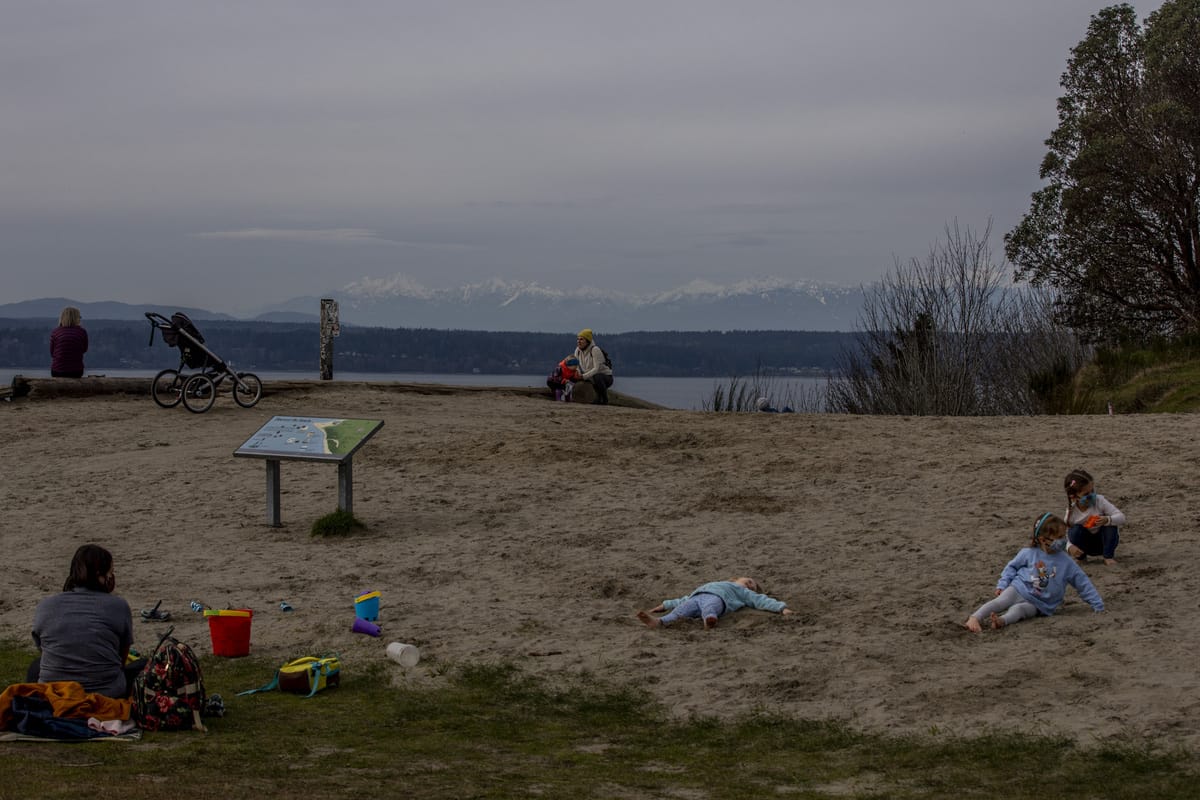During the pandemic, parks have been a lifeline for millions of people — and for good reason.
Parks have long played a role in preventing and surviving public health crises. New York City’s largest and most well attended parks, Manhattan’s Central Park and Brooklyn’s Prospect Park, were both constructed in part to respond to disease outbreaks in the city. Frederick Law Olmsted, who designed parks in New York City and Puget Sound, recognized their essential role in the preservation of health when he wrote, parks “supply the lungs with air screened and purified by trees and recently acted upon by sunlight.”
The importance of parks in this current pandemic reminds us that we can leverage them in preparation for the next crisis, too.
For this, we have a model in Japan, a nation that has responded to its long history of natural disasters by building a more resilient society. In its 400-year history, Tokyo, which the global insurer Swiss Re has called “the riskiest metropolitan area in the world,” has rebuilt itself in the wake of earthquakes, fires, floods and bombings. Each of these crises has presented an opportunity, and government officials have seized it to adapt and prepare for the next disaster.
Consider the nation’s “disaster parks,” a clear example of Japan’s culture of everyday preparedness.
The Great Kanto Earthquake of 1923 provided an early lesson in all the ways urban design can directly lead to loss of life during a disaster. More than 140,000 people died, some directly in the earthquake, many others in the 40-foot tsunami that followed, and still many more in the catastrophic fires that sparked from ruptured gas lines throughout the city.
Out of this devastation, a land-use concept known as hiyokechi, which originated in the Edo era (1600-1868), gained renewed significance. Edo, as Tokyo — or the “City of Fires” — was then known, was often beset by fires, which officials sought to prevent through the creation of barrier zones that doubled as public plazas.
Today, Tokyo is home to about a dozen “disaster parks,” the modern iterations of hiyokechi. One of these, Hikarigaoka Park, offers 150 acres of cherry trees, ponds and recreational amenities. Unless you knew to look, you may not know that the park is equipped to help people survive any number of emergencies. Benches conceal stoves; sewer coverings conceal toilets; the lampposts, which are solar-powered, contain outlets; and bunkers full of nonperishable foods and water tanks are located throughout the park.
Puget Sound, of course, is not immune to catastrophic disasters, and we would do well to expect them. A massive earthquake is overdue. Mount Rainier, the “potentially most dangerous volcano in the Cascade Range,” will eventually erupt. And experts say climate change will provoke new pandemics. Now is the time to start thinking about how to make better use of our built environment to ensure that more of our neighbors survive these disasters.
Building more dexterous parks and green spaces is an important place to start. There is a lot to do to get us there — from reforming our funding structures, to engaging communities in design, to reforming our ideas about what public space is and does. With the lessons of the current pandemic fresh in our minds, we ought to start this work now.

As essential as they are to our experience of the pandemic, parks in Puget Sound are not yet capable of playing the expansive role they could play in times of crisis. One of the least surprising revelations of this pandemic is that the people who could most benefit from access to quality parks and open space simply don’t have it. Ill-conceived planning processes, regressive tax structures and legacies of development schemes that fail to see people of color and lower-wage earners as deserving of public goods are all part of the problem.
So, for the future, our public officials must ensure that more people have better access to quality parks and green spaces. This expansion of access must prioritize neighborhoods and communities that have been marginalized and overlooked through planning, policy and tax structures.
Next, we must expand our collective idea of what parks are and can be. This begins by recognizing that parks play essential roles beyond recreation, especially in times of crisis. We know this, albeit unofficially, because we are already seeing one such crisis play out in parks and other public spaces. Residents up and down Puget Sound who have nowhere else to go turn to parks to remain in the city. Rather than seeing homeless people (or parks) as the problem, we might recognize that parks are playing a role they should be playing when policy and social structures fail.
Only then can we start realizing the potential of parks as both physical and social infrastructure — as sites for testing and vaccination; Wi-Fi access points; food bank distribution centers; warming and cooling centers; community legal and health clinics — and, yes, places for jogging, soccer camp, picnicking and loitering. To some, these may all fall under the category of “alternative uses,” but what if they weren’t? What if we saw and used parks as actual public — in the truest, most expansive sense of the word — space?



